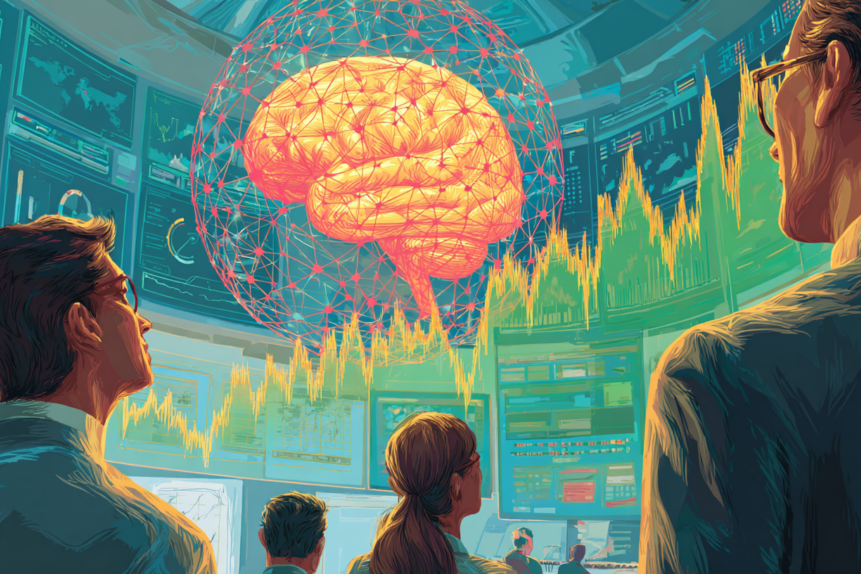Copyright Benzinga

After a brutal week that saw over $1 trillion erased from the market value of the Magnificent Seven, with Nvidia Corp. (NASDAQ:NVDA) alone shedding more than $500 billion, fresh fears of an AI-driven bubble are gripping Wall Street—yet some analysts say it's far too soon to call it a dot-com burst repeat. In a report shared Monday by Goldman Sachs, equity analysts Dominic Wilson and Vickie Chang draw a sharp line between today’s AI rally and the dot-com bubble. Their message: yes, things are hot, but we're not in meltdown mode—at least not yet. Instead, they say the situation resembles the earlier stage of the 1990s boom—closer to 1997 than 1999. "There may still be plenty of room for the AI investment boom to run," they said, cautioning that investors should be alert—but not panicked. Are We In An AI Bubble? Not Quite Yet Is this the beginning of the end for the AI trade? Not necessarily, says Goldman Sachs. The investment bank acknowledges that equity valuations, particularly for AI-linked companies, are high. In fact, U.S. equity valuation measures are now at their richest since the dot-com era. But high prices alone don't define a bubble. "Macro bubbles"—those with severe, economy-wide fallout—require more than inflated prices. They're marked by surging investment spending, excessive leverage, and deteriorating financial balances. That's what happened between 1998 and 2000, when tech investment peaked at 4.5% of GDP and corporate profitability fell sharply. By contrast, today's data still looks contained. "Although valuations are high, we are not yet clearly in bubble territory," Wilson and Chang wrote. Corporate Fundamentals Look Stronger Than in the 1990s Unlike the late 1990s, when corporate profit margins peaked years before the market collapsed, today's earnings remain solid. Goldman notes that profit margins in the national accounts are stable, productivity is improving, and wage growth is slowing—reducing pressure on companies' bottom lines. At the same time, the biggest players in the AI space are funding growth through free cash flow, not debt. "The corporate sector financial balance remains marginally in surplus," the report states, in contrast to the 1990s, when rising investment and falling profitability pushed the sector into deficit. While some deterioration in leverage is now visible—particularly among hyperscalers—corporate balance sheets remain far healthier than they were in the run-up to the dot-com bust. Credit spreads remain tight, and equity volatility, though occasionally spiking, has not shown the sustained rise seen in 1998 and 1999. Still Early—But Cracks May Form Goldman doesn't deny that the landscape is evolving. The firm sees early echoes of the late-1990s shift, including more aggressive credit issuance, declining cash reserves at large tech firms, and an uptick in vendor financing structures. The balance of risks may be shifting. The corporate sector is close to slipping into deficit for the first time in two decades, and if investment continues accelerating, profitability could begin to compress. "We see a growing risk that the imbalances that built up in the 1990s will become more visible as the AI investment boom extends," the analysts wrote. This Looks Like 1997, Not 1999 The macro environment also lacks the overheating seen in the late '90s. Back then, U.S. real demand growth was running near 5%, and capital from emerging markets flowed into U.S. assets as the Fed cut rates in response to external shocks. Today, rate cuts are again in play, but capital inflows are absent, and the domestic economy is more fragile, with a softer labor market and slower consumer spending. According to Goldman, we are in the early phase of a major investment cycle. Their estimates suggest the long-term benefits of generative AI—valued at $8 trillion in discounted capital revenue—could justify sustained capex. But they also warn that equity markets may have already priced in much of that upside, leaving investors exposed to disappointment if results fall short. A Rally With Risk—But Not A Bubble Yet The message from Goldman is cautiously optimistic. The AI boom, they say, is real and economically significant, but not yet unsustainable. The macro conditions that defined 1999's mania—runaway debt, profit deterioration, and collapsing savings—are simply not visible today. "If the AI boom stumbles," they wrote, "rates could ultimately end up much lower." But unless that happens, they believe there's still plenty of room for the cycle to run. For now, the bubble isn't bursting—it's still being built. Read Next: Main Street’s Job Fears Hit Wall Street As AI Rally Falters: This Week In Markets Image created using artificial intelligence via Midjourney.



